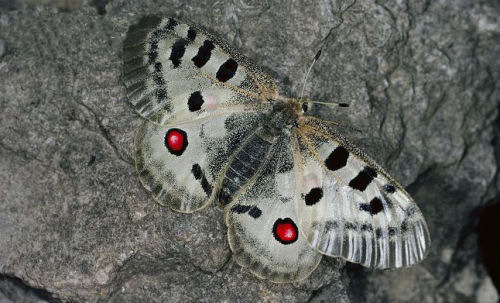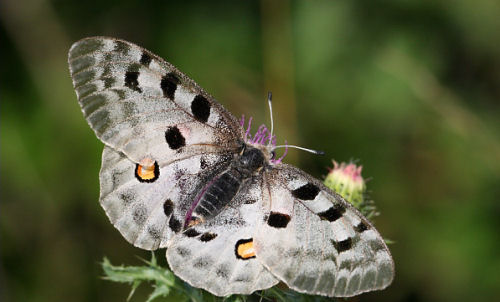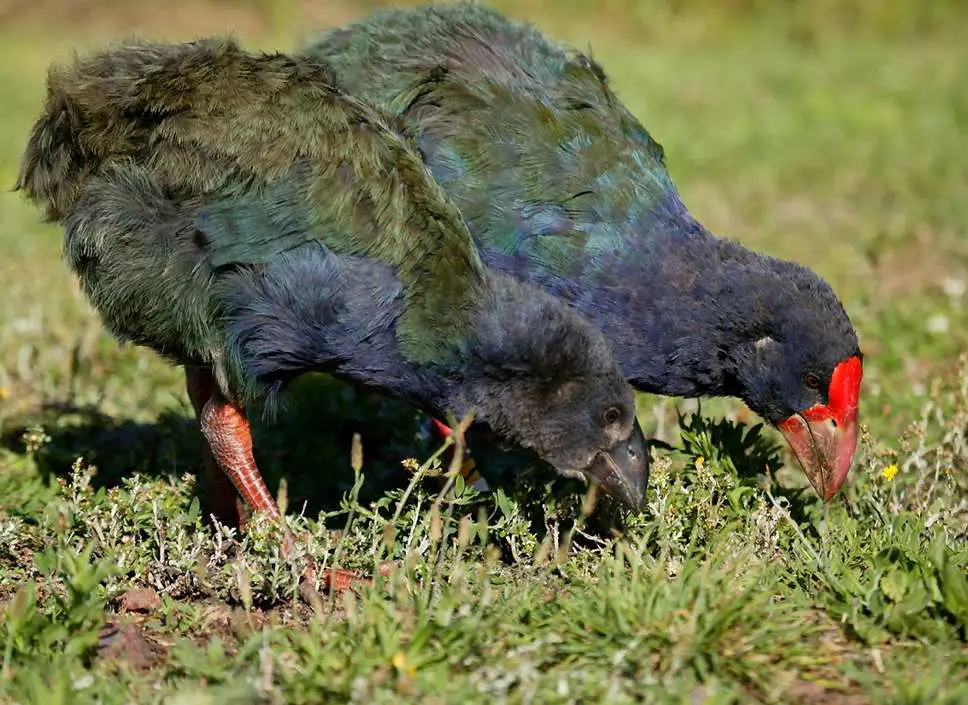Apollo Butterfly
The Apollo Butterfly or simply the Apollo is a very beautiful species of butterfly that were once widespread all over the European and Asian meadows. Unfortunately, nowadays they’re almost extinct and very rarely seen. They inhabit territories in meadows and mountains up to 2200 metres above sea level, ranging from Europe to Central Russia.
The various species of butterflies differ in their colouration and the size of the dots on their wings. Apollo’s five to eight centimeter long wings are creamy, with black and red or yellow spots. These colourful spots are intended to confuse predators, mostly birds, because the red or yellow dots hold a similarity to a mammal’s eyes, thus saving the butterfly from certain death. The small head holds a pair of eyes, as well as two long tentacles that act as smell and taste sensors. The butterfly’s chest and stomach are covered with small, white hairs. Three pairs of legs help the butterfly land on flowers, although they’re not quite well developed.
Mature Apollos are most often seen in July and August. They prefer natural, open mountain sides, covered with plenty of flowering plants. Obviously, due to human encroachment, these territories become more and more rare, which is why the number of the butterflies is shrinking and in many territories they’ve been confirmed as protected species.
Apollo Butterflies mate in July and June. The female lays multiple hundred eggs on thick leaves. The caterpillars hatch in spring and immediately start feeding on the leaves of the plant they hatched on. As the caterpillars have an external skeleton, they have to “drop their skin” multiple times, because it doesn’t grow. While developing, the caterpillars drops skin for a total of five times, after which they come down to ground and digs itself in the soil. A cocoon develops and two months later a butterfly emerges.
The total time required for a newly hatched Apollo to become what we understand with a butterfly is about 3 months. That is why, the caterpillar has to eat a lot of food to develop quickly and store energy for cocoon phase. Usually, the plants they hatch on are not very nutritious, and the caterpillar replaces quality with quantity – it eats large quantities of food, not resting until they are ready to create a cocoon. Mature specimen, however, feed on nectar, which they suck out of flowers using their straw-like mouth apparatus.
The Apollo is certainly one of the most beautiful butterflies and many collectors hold a great value for this butterfly, although it should be noted that in most countries it is illegal to catch, kill or harm them. Requiring pollution-less, natural and wild conditions, the Apollos are at a risk, as more and more of their natural habitat is being changed by the humans.




